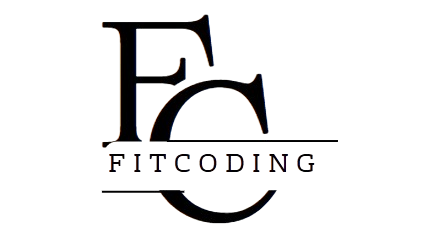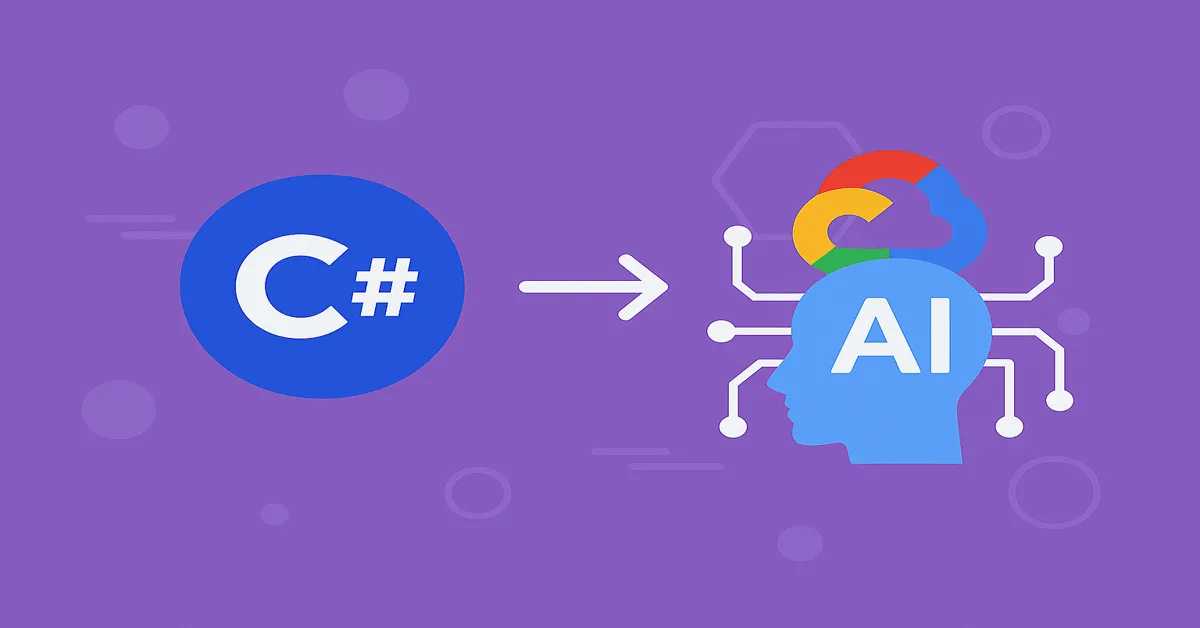In the era of intelligent software, integrating artificial intelligence (AI) into applications is no longer a luxury reserved for research labs or tech giants. Today, AI is embedded in everyday experiences—recommendation engines, sentiment analysis, voice assistants, fraud detection, and personalized search—all woven into the fabric of modern software – Google Cloud AI.
But where does the average developer begin?
For those working in the Microsoft ecosystem, particularly with C#, the path may seem less straightforward compared to more AI-heavy languages like Python. Yet with Google Cloud’s robust suite of AI and Machine Learning APIs, and a bit of thoughtful design, it’s entirely possible—and increasingly practical—to bring advanced AI capabilities into C# applications.
This article explores how to integrate Google Cloud AI and ML APIs into a real-world C# application, from setup and authentication to usage patterns and architectural considerations. Think of this as a bridge—between powerful AI tools and the everyday developer building enterprise software, customer solutions, or internal tools in C#.
The AI Gap in C#
C# is rarely the first language mentioned in machine learning discussions, but it remains the backbone of many enterprise systems, powering ERPs, financial services, desktop apps, and back-end services. The truth is, not every AI use case requires training deep neural networks from scratch. Often, the power lies in leveraging pre-trained models, and that’s where Google Cloud AI APIs come in.
From Vision, Speech, and Translation to Natural Language Processing, Google provides APIs that deliver world-class AI out of the box—accessible over HTTP and perfectly consumable from C#.
Why Google Cloud for AI?
There are several compelling reasons developers opt for Google Cloud when building AI-powered applications:
- Pre-trained models: No data science required. Use state-of-the-art models with simple API calls.
- Consistency: Unified API design and documentation across services.
- Global scale: Fast response times, multi-region support, and enterprise-grade reliability.
- Custom ML models: If needed, you can train and host your own models via Vertex AI.
Most importantly, Google’s AI services can be accessed via simple REST or gRPC endpoints, which means they are language-agnostic—including C#.
Real-World Scenarios
Let’s explore a few examples of what you can build with Google Cloud AI APIs in C#:
| Use Case | API | Example |
|---|---|---|
| Image recognition | Vision API | Auto-tagging user-uploaded images |
| Sentiment analysis | Natural Language API | Classifying customer feedback |
| Voice transcription | Speech-to-Text API | Building a searchable call log |
| Real-time translation | Translate API | Supporting multilingual chat |
| Chatbot integration | Dialogflow | Enhancing customer support tools |
In the sections that follow, we’ll walk through how to integrate these capabilities into a real C# application.
Setting Up Your Google Cloud Project
Before you write a single line of C# code, you’ll need to set up your Google Cloud environment.
1. Create a GCP Project
Visit https://console.cloud.google.com, create a project, and take note of the Project ID.
2. Enable APIs
Enable the required APIs, depending on your use case:
- Cloud Vision API
- Natural Language API
- Speech-to-Text API
- Translate API
3. Create a Service Account
Create a new service account under IAM & Admin, assign roles (e.g., Cloud Vision API User), and generate a JSON key file.
4. Install Google Cloud SDK
Install the Google Cloud SDK if you plan to interact with resources locally or deploy to GCP.
Preparing the C# Environment
C# interacts with Google Cloud APIs via client libraries or raw HTTP requests. Google provides official NuGet packages for most AI services.
Add NuGet Packages
bashCopyEditdotnet add package Google.Cloud.Vision.V1
dotnet add package Google.Cloud.Translation.V2
dotnet add package Google.Cloud.Speech.V1
dotnet add package Google.Cloud.Language.V1
Also, ensure you have this in your environment or your code:
csharpCopyEditEnvironment.SetEnvironmentVariable("GOOGLE_APPLICATION_CREDENTIALS", "path/to/your/service-account-key.json");
This sets up the authentication layer automatically across all services.
1. Using the Vision API in C#
The Cloud Vision API enables powerful image analysis—label detection, OCR, face detection, and more.
Example: Label Detection
csharpCopyEditusing Google.Cloud.Vision.V1;
var client = ImageAnnotatorClient.Create();
var image = Image.FromFile("sample-image.jpg");
var response = client.DetectLabels(image);
foreach (var label in response)
{
Console.WriteLine($"Label: {label.Description}, Score: {label.Score}");
}
This snippet reads an image, sends it to the API, and prints labels like “Animal”, “Nature”, “Sky”—ideal for media libraries or auto-tagging systems.
2. Using the Natural Language API
This API analyzes and understands human language—sentiment, entities, syntax, and more.
Example: Sentiment Analysis
csharpCopyEditusing Google.Cloud.Language.V1;
var client = LanguageServiceClient.Create();
var response = client.AnalyzeSentiment(Document.FromPlainText("I absolutely love this product!"));
Console.WriteLine($"Score: {response.DocumentSentiment.Score}");
Console.WriteLine($"Magnitude: {response.DocumentSentiment.Magnitude}");
Sentiment scoring is perfect for analyzing customer reviews or social media content at scale.
3. Using the Speech-to-Text API
This API turns spoken audio into written text.
Example: Transcribing Audio
csharpCopyEditusing Google.Cloud.Speech.V1;
using System.IO;
var speech = SpeechClient.Create();
var audio = RecognitionAudio.FromFile("audio.wav");
var config = new RecognitionConfig
{
Encoding = RecognitionConfig.Types.AudioEncoding.Linear16,
LanguageCode = "en-US"
};
var response = speech.Recognize(config, audio);
foreach (var result in response.Results)
{
Console.WriteLine(result.Alternatives[0].Transcript);
}
Great for transcribing meetings, support calls, or podcasts into searchable formats.
4. Using the Translate API
The Translation API allows dynamic language conversion.
Example: English to Spanish Translation
csharpCopyEditusing Google.Cloud.Translation.V2;
var client = TranslationClient.Create();
var response = client.TranslateText("Hello, world!", "es");
Console.WriteLine(response.TranslatedText); // Output: Hola, mundo!
Use it to build multilingual interfaces or real-time chat systems.
Architectural Considerations
1. Async Calls for Performance
Each API call is an external network operation. In production, always use async/await to avoid thread blocking.
csharpCopyEditvar response = await client.AnalyzeSentimentAsync(document);
2. Batch Requests Where Possible
Some APIs, like Vision, allow multiple images to be processed in a single request—great for reducing latency and cost.
3. Caching for Cost Control
To reduce API calls:
- Cache frequent translations
- Use CDN for images after processing
- Store transcribed audio results in a database
Authentication in Production
- Never hard-code credentials.
- Use Workload Identity Federation when deploying on GKE or Cloud Run.
- Rotate keys periodically and apply least-privilege IAM roles.
Deployment Tips
Deploy your C# application as a:
- Console app for batch processing
- ASP.NET Core API for client-facing services
- Background worker in a job scheduler or message queue
Pair with Google services like:
- Cloud Run: For containerized, autoscaling APIs
- Pub/Sub: For processing data events at scale
- Firestore or BigQuery: For storing structured results
Error Handling and Resilience
- Always catch
RpcExceptionorGoogleApiExceptionto handle quota errors, network issues, or timeouts. - Retry using exponential backoff for transient errors.
- Log both request context and response summaries for traceability.
Future-Proofing: Vertex AI Integration
If you want to go beyond pre-trained models, Vertex AI is Google’s ML platform for training, deploying, and managing custom models.
Use a hybrid model:
- Start with APIs (e.g., Vision, Translate)
- Move to Vertex AI when you need model customization
- Use AutoML if you have labeled data but no ML experience
C# can still consume Vertex-hosted models via HTTP endpoints, making it viable for advanced AI integration.
Final Thoughts
Integrating Google Cloud AI and Machine Learning APIs into your C# application isn’t just possible—it’s practical, scalable, and increasingly essential. You don’t need to switch languages or become a machine learning expert. With thoughtful architecture and a few well-placed API calls, your application can gain powerful capabilities like natural language understanding, speech transcription, or real-time translation.
C# developers now have a bridge to some of the most powerful AI infrastructure available—without leaving the comfort of their own ecosystem. And in a world where applications are judged by their intelligence, that bridge is well worth crossing.
Read:
Getting Started with ML.NET: Building Your First Machine Learning Model in C#
The Best Books to Learn C#: A Detailed Guide for Beginners and Experienced Developers
The 30 Most Asked Interview Questions of C#: A Comprehensive Guide for Developers
Building Scalable Microservices with C# and Google Kubernetes Engine (GKE)
FAQs
1. Can I use Google Cloud AI APIs directly with C# or do I need to use a wrapper library?
Yes, you can use them directly.
Google provides official .NET client libraries (available via NuGet) for many of their AI services, including Vision, Speech, Translate, and Natural Language APIs. These libraries are fully supported and optimized for use with C#, eliminating the need for wrappers or third-party SDKs.
2. How do I authenticate my C# application to use Google Cloud AI services?
Authentication is typically done using a service account key in JSON format:
- Set the environment variable
GOOGLE_APPLICATION_CREDENTIALSto point to your JSON key file. - Alternatively, use Workload Identity Federation for deployed cloud environments (e.g., GKE, Cloud Run) to avoid managing keys manually.
Example:
csharpCopyEditEnvironment.SetEnvironmentVariable("GOOGLE_APPLICATION_CREDENTIALS", "path/to/key.json");
3. Are the AI APIs asynchronous, and should I use async/await in my C# code?
Yes.
Most Google Cloud AI client libraries in .NET support asynchronous methods (e.g., AnalyzeSentimentAsync, TranslateTextAsync). You should use async/await to ensure non-blocking performance, especially in ASP.NET Core or desktop UI applications.
4. Which Google AI APIs are best suited for enterprise C# applications?
For enterprise-grade C# applications, the most commonly used Google AI APIs include:
- Cloud Vision API: For document scanning, image classification, and OCR.
- Natural Language API: For feedback analysis, entity extraction, and text classification.
- Speech-to-Text API: For call transcription or voice-enabled tools.
- Translate API: For multilingual applications and internationalization.
All of these can be integrated with robust logging, caching, and rate-limiting mechanisms to support production workloads.
5. Can I integrate custom machine learning models trained on Google Cloud with my C# app?
Yes.
Using Vertex AI, you can train custom ML models and expose them via REST endpoints. Your C# app can then use HttpClient or a custom SDK to send data to those endpoints and receive predictions, just like any other web API.
This makes it possible to go beyond pre-trained models when you have specific data or business logic requirements.











